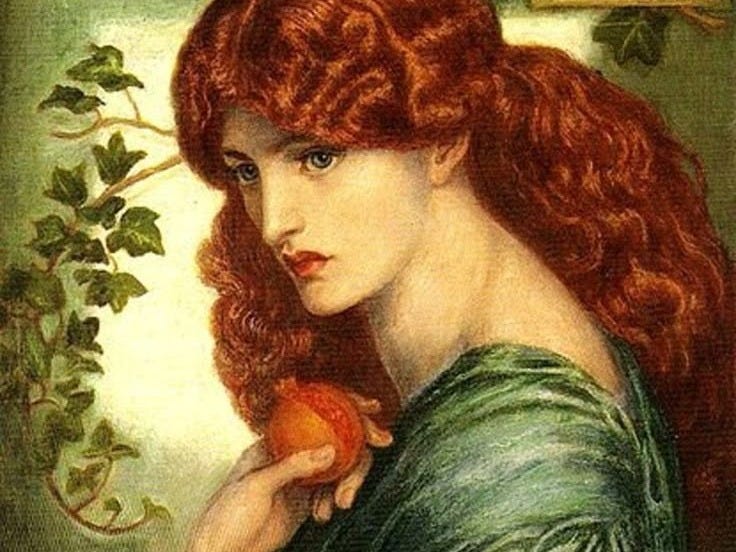The Binary Trap: Why 'Either/Or' Thinking is Tearing Us Apart
and the Ancient Wisdom That Can Heal Us.
Ever feel like you're being pulled in two impossible directions? Right or wrong, success or failure, man or woman– our world often presents us with stark, either/or choices that leave little room for nuance.
This isn't just a feeling. French philosopher Jacques Derrida argued that this either/or thinking underpins our metaphysics, defining Western politics, science and philosophy.
But what happens when this rigid framework infiltrates our deepest selves, dictating our identities, our work, and even our capacity for joy?
Feminist writer bell hooks argued that this thought pattern is the “central ideological component of all systems of domination in Western society.”
For years, I unknowingly lived this binary, suppressing my creative self in favour of my rational mind. The resulting drive for 'productivity' turned work and life into an endless to-do list, leaving no space for the unproductive, for the very act of 'doing nothing' that gives rise to true innovation. It was an either-or equation I couldn't live within, as the unwitting stifling of my creative, intuitive and imaginative self became unbearable.
I am not alone in experiencing this phenomenon. NASA found that 98% of five-year-olds qualify as creative geniuses, dropping to 2% by adulthood. A chilling testament to the damage of this binary mindset instilled by Western Education systems that prioritise evaluative thought.
The Trap of Binary Thinking
This mental mode, reducing complexity to simple binaries, has been one of history's most powerful innovations. It birthed logic, hypothesis testing, and experimental science.
But here's the crucial point: it's just a lens. A pair of spectacles we should don for specific questions, then remove. To live with this lens always upon our noses allows it to shape our identity, our thought patterns, our entire society.
The downside of its clean-cut clarity?
Victory must always come at another’s expense, fuelling polarisation and discord.
It necessitates one member of a pair being superior, the other found wanting.
Every question becomes a win/lose dichotomy. Every identity, the flip side of an 'inferior' other: Man/woman, white/black, able/disabled, leader/follower, parent/child, doctor/patient...
We get absorbed in a never-ending scramble to be 'on top,' missing the beauty and potential of the in-between, where the diverse, unusual, and ambiguous can birth new meaning.
A Third Way
But what if there's a third way? A path to embracing the tension between seemingly opposing forces, rather than letting them destroy us? This is the profound lesson of Persephone and her pomegranate – an ancient symbol of duality and a reminder that true power and beauty lie not in choosing one side, but in inhabiting the space in between.
For those of you who do not know her story, Persephone was taken to the underworld by Hades. Her mother, Demeter, the goddess of the harvest, was heartbroken and roamed the earth searching for her daughter. As she neglected her duties, the earth wilted, and people began to starve. Eventually, the King of the Gods, Zeus, was forced to intervene and decreed that Persephone must be returned to her mother, provided she had not eaten any food in the underworld. Persephone had eaten just six pomegranate seeds, so she would return to her mother for six months of the year and spend the remaining six months with Hades. For the half year that Demeter was reunited with her daughter, the earth flourished; for the time her daughter was away, the earth wilted and the seasons were born.
Persephone’s choice to slip six pomegranate seeds between her lips is an act that melts a polar, binary choice into a duality that births a new era in her own life and those around her.
She transforms the parameters of the impossible choice that Zeus has placed before her, instead maintaining and nurturing the relationships with both her mother and her lover. Through doing so, she catalyses a metamorphosis- a new configuration of relationships and meaning that was unimaginable before. In subsequent stories, the potential girl-victim becomes the imposing Queen of the dead, a figure with significant power. Demeter learns to live half the year without her daughter, and the earth gets the breathtaking beauty and rhythm of the seasons.
The Pomegranate Path: Embracing Duality for a New Era
Our world is wilting, just as Earth did when Demeter mourned Persephone, because we’re paralysed by choices; we don't have the collective will to make within our binary cages. We're only capable of simple, science-based solutions, while the complex leadership needed to navigate our ecological and societal fallout eludes us.
But Persephone shows us another path. Inhabiting duality, living with the tensions rather than seeking to resolve them, opens up unimaginable possibilities. In the space between our neat but faulty constructs, new ways of thinking — better suited to carry us into our future — can flourish.
This isn't a linear growth chart. Like the seasons, it’s a cyclical process of renewal.
Practically, it means:
Breaking the monopoly of Western philosophical paradigms in academia, balancing experimental data with story.
Building political systems that don't hinge on opposition, like Citizens' Assemblies, fostering collective subjectivism.
Creating professional spaces that cut across disciplines and silos.
As we stand on the brink of a new era, contemplating our self-destruction, I invite you to slip some pomegranate seeds between your lips. Taste their tangy sweetness, revel in the tension between opposites, and prepare to be reborn.
The future and your own true self await in the space between.


